Peoria Audubon Society is a local affiliate of both:
National Audubon Society & Illinois Audubon Society

MSD Wetland Field Trip - Page 1 Page 2
April 5, 2008
Photo Gallery
Bert Princen of the Peoria Audubon Society, received special permission from the Chicago Metropolitan Sanitary District (MSD) to visit their private 20,000+ acre facility just west of Canton, IL.
The private wetlands were originally purchased by the Chicago MSD (a.k.a. Metropolitan Water Reclamation District) 40+ years ago with the intent of using the formerly strip mined land as a location to transport sludge from the Chicago area.
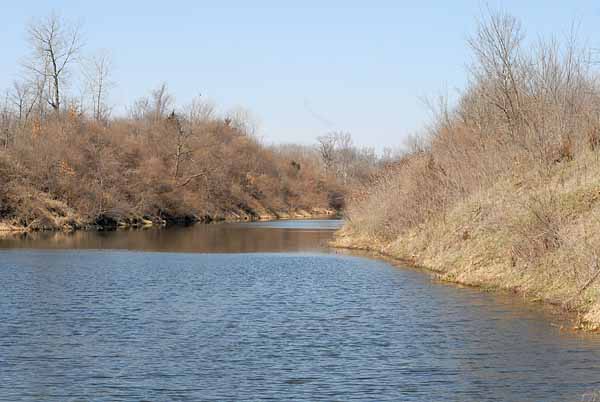
Reclaimed Lake at MWRD
The original intent was to ship the sludge to the Canton facility for use as a fertilizer for farming. Over the years, perhaps due to economics and the logistics of transporting the semi-liquid sludge from barges in the Illinois River (pipe?), the shipment of sludge was stopped. In the interim, the lakes, wetlands, and woodlands serves as a wildlife refuge for migrating water birds. Some farming operations are going on, but much of the acreage simultaneously functions as a refuge.
With a limit of only 20 birders for the trip (Bert indicated that he had to turn several late requests away) we ganged up into 5 vehicles for covering the distances between lakes and habitats. Dennis brought 5 FRS radios, so that each vehicle could listen to Bert's descriptions of what we were looking at. And, they could ask questions and communicate other sightings. Bert said that the more eyes, the better. Having the radios to communicate as a group was a big hit with the birding group.
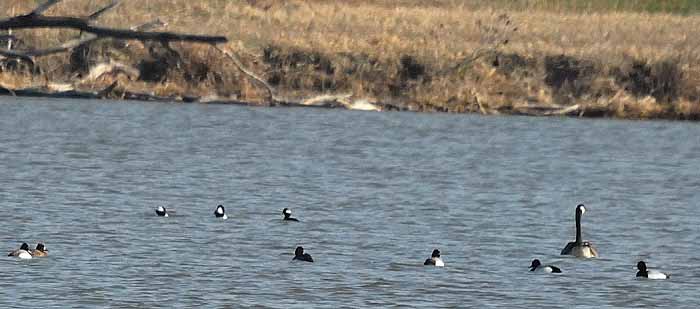
Bufflehead, Lesser Scaup and Canada Goose
At one the first lakes in the morning, we had the opportunity to view a variety of waterfowl.
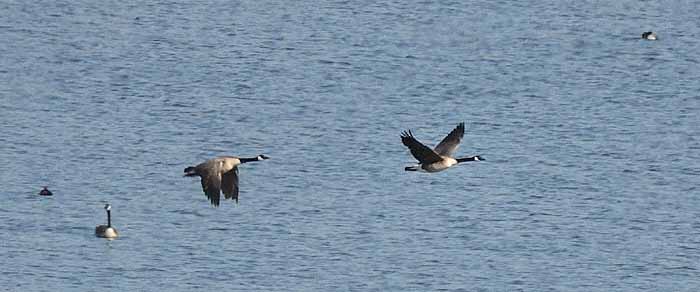
Canada Geese Taking Flight
There were a significant number of geese taking flight in the early morning sun.
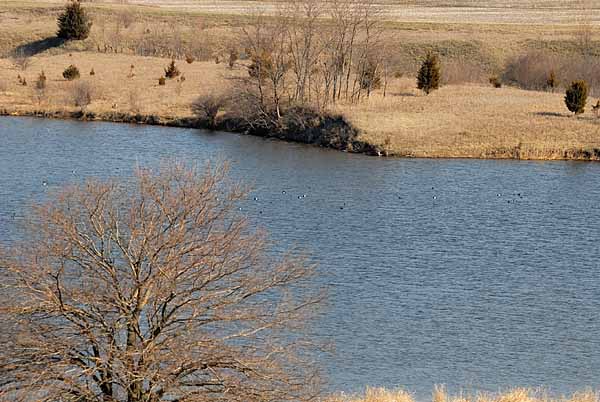
Wider View of Lake - View from Hill
At one of the larger lakes, we had a majestic view from a hill. The above photo of Canada geese in flight was at this lake from this hill

Eastern Meadowlark
All morning long, we heard numerous eastern meadowlarks singing in the crisp air. Usually, they were hidden in the grasses, but at one stop, our birding group had the opportunity for a nice view of their yellow breast and black bib.
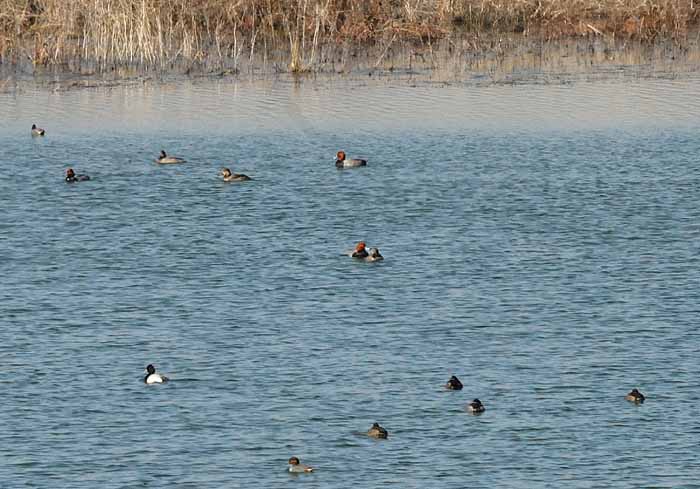
Redheads and Lesser Scaup
We saw numerous redhead ducks in several of the lake ponds. Bert emphasized that we needed to note the blue bill, to distinguish them from canvasbacks. The lesser scaup also have blue bills.
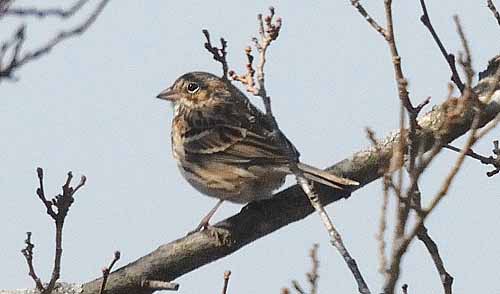
Vesper Sparrow
At one location, we spotted movement of a small sparrow in a thicket. Bert identified the bird as a vesper sparrow. And, with a radio in each of cars in our birding convoy, let everyone know what they were looking at. It took a little while, but Dennis, in the last of 5 vehicles, was finally able to capture the above photo. This was the first time he had seen the definitive markings of a vesper sparrow. Later he checked his field guide to note the following markings: (1) complete white eye ring, (2) uniformly streaked back and (3) an off-white belly that cannot be seen in this image. For Dennis, the eye ring was the clincher.
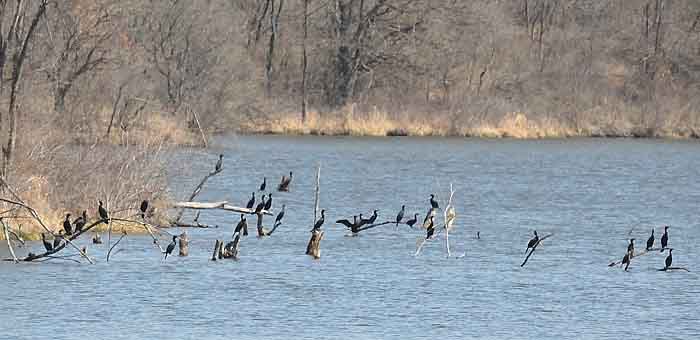
Double-crested Cormorants
As we drove along in our 5-vehicle caravan, we saw a large flock of double-crested cormorants on one of the lakes. Dennis' group noted that identical profiles and size to complete the identifications.
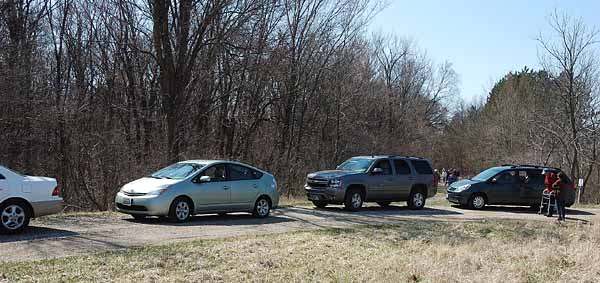
Convoy of Birders at Woods
With all the lakes, it was nice that there was also a woodland habitat to bird.
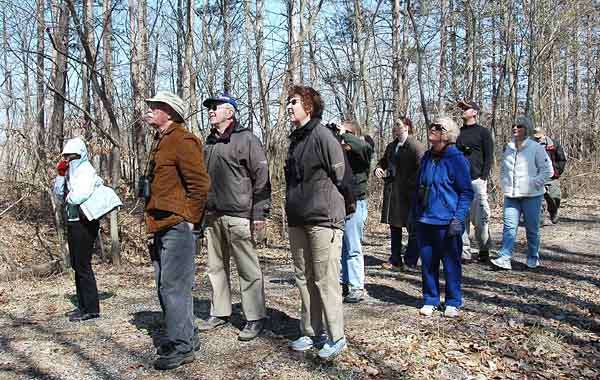
Birding in the Woods
We slowly walked through the woods looking for woodland species.
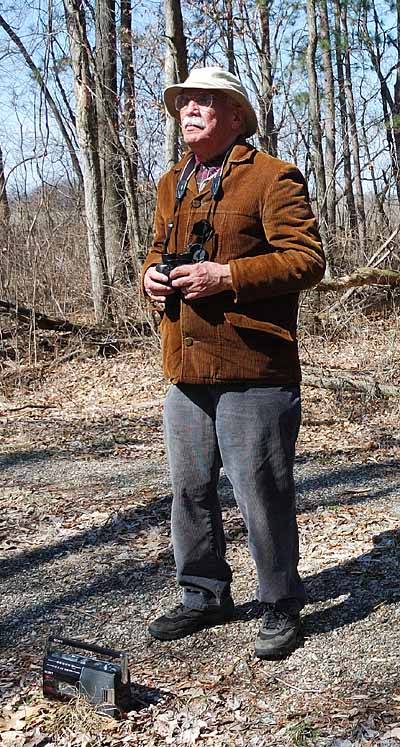
Bert brought along a tape recording of owl sounds. He indicated that the first call was an Eastern Screech Owl and after a couple of minutes, he also had a Barred Owl. This provided perhaps 5-minutes of owls calling
Bert explained that smaller birds dislike the presence of predators and will frequently mob a hawk or owl in hopes of driving it away.
Since the tape was played in the daytime, the small birds would think that a nocturnal owl was resting in their habitat. The birds would want the owl to go somewhere else, so that they would be out of danger in the evening or at night.
The consequence for birders is that playing the owl tape tends to draw many of the smaller birds out of the thicket.
Such is the theory, but sometimes, it doesn't work. We waited quite a while for the small birds to come out, but on this very bright day, the birds must have known that it was a tape.
In any event, it was the first time that several birders in the group had seen this done. And, it was a beautiful day to experience the outdoors.
Bert Princen Playing Owl Tape